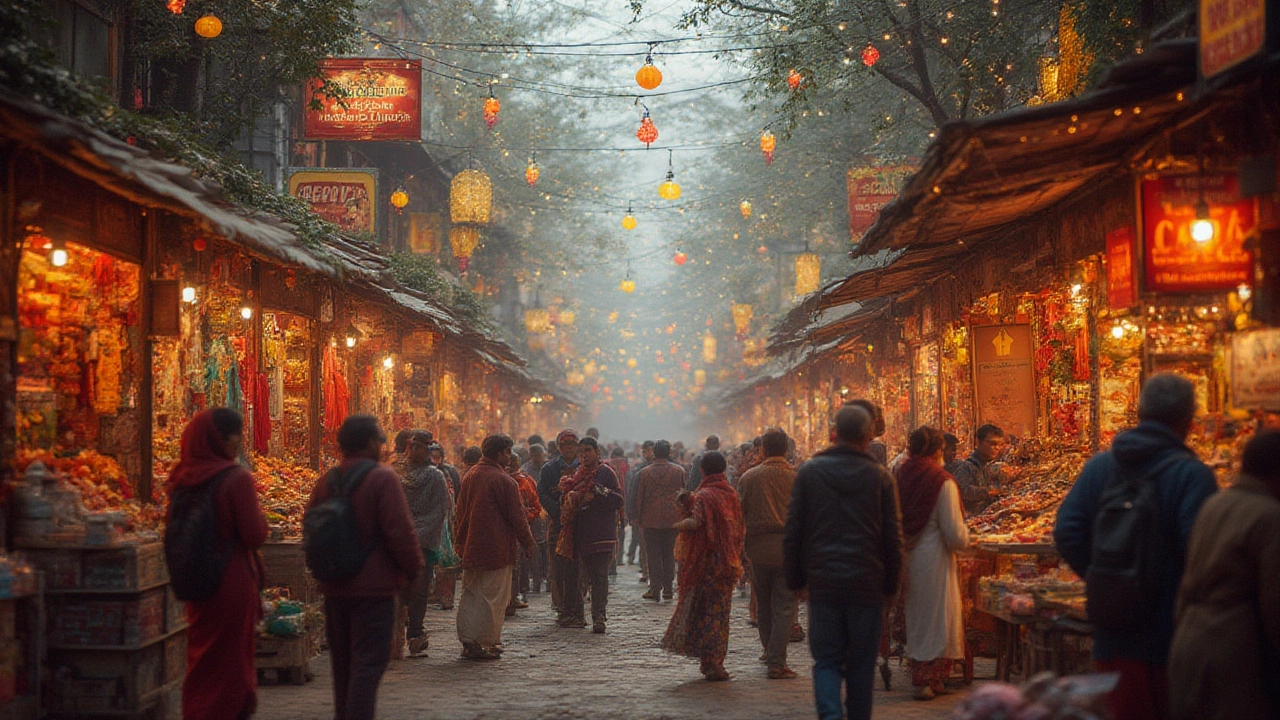
Find out why December is the most expensive month to visit India, how prices skyrocket, and ways to dodge massive costs during high season travel.
Ever wondered why some travelers swear by India's busiest months while others avoid them? When you plan Peak Season Travel India, the period when tourist flow, weather patterns, and cultural events overlap, creating both opportunities and challenges. Also called high‑season travel, it demands smart choices to enjoy the crowd‑energy without the stress. Peak season travel India can deliver unforgettable sights if you understand the key factors.
The first factor is peak season, the time frame when tourist numbers hit their highest levels, typically driven by climate and festivals. Knowing when this window opens helps you align your itinerary with the country’s natural rhythm.
Next up is weather, regional climate conditions that dictate comfort, safety, and activity choices. India's climate varies wildly – from scorching desert heat in Rajasthan to monsoon-soaked Kerala – so the same month can feel completely different north versus south.
Another huge draw is festivals, cultural celebrations that attract massive crowds and showcase vibrant traditions. Whether it’s Diwali, Holi, or the Pushkar Camel Fair, festivals often define the peak travel calendar.
Finally, crowds, the influx of tourists that impacts accommodation availability, transport pricing, and site accessibility, are the practical side of peak season travel. Managing crowds means early bookings, flexible dates, and sometimes choosing off‑peak alternatives.
Putting these pieces together creates a clear semantic triple: Peak season travel India encompasses weather patterns, festivals, and crowds. It also requires careful planning to balance demand and experience, and weather influences both festival timing and crowd density. These connections guide the advice you’ll find below.
Practical tips start with booking your stay at least two months ahead, especially for popular destinations like Jaipur, Goa, or Varanasi during festival weeks. Look for hotels that offer free cancellation – a safety net if the crowd gets overwhelming. On transport, reserve rail tickets early; Indian Railways releases seats months in advance for high‑traffic routes. Pack lightweight, breathable clothing for hot zones, and a waterproof jacket if you’re heading to the monsoon belt.
Regional differences matter. In the north, October to March is the sweet spot – mild weather, clear skies, and festivals like Diwali and the Delhi Republic Day parade. The Himalayas welcome trekkers from April to June, before the monsoon kicks in. Meanwhile, the south shines from December to February, when Kerala’s backwaters are calm, and Goa’s beaches are sunny. If you aim for the coastal east (Odisha, West Bengal), November to February avoids the cyclone season.
Health considerations also shift with the season. During the hottest months, stay hydrated and protect against heatstroke. In monsoon‑heavy regions, watch out for mosquito‑borne diseases; a prophylactic malaria pill might be advised for certain pockets, and using repellents is a must. Always have a basic medical kit and know the nearest hospital in your planned area.
By now you should see how weather, festivals, and crowd dynamics intertwine to shape a peak season experience. The articles below dive deeper into each aspect – from cost‑efficient travel during the Golden Triangle’s busiest weeks to safety tips for navigating crowded pilgrimage sites. Explore the collection to fine‑tune your plan and turn peak season travel India into a smooth, memorable adventure.

Find out why December is the most expensive month to visit India, how prices skyrocket, and ways to dodge massive costs during high season travel.